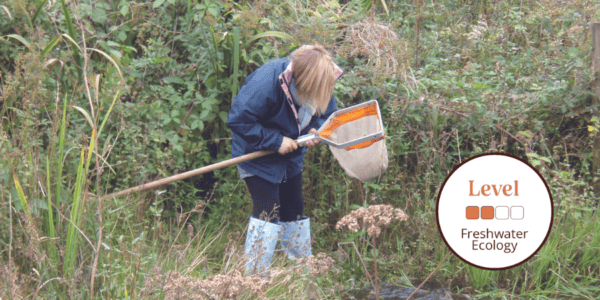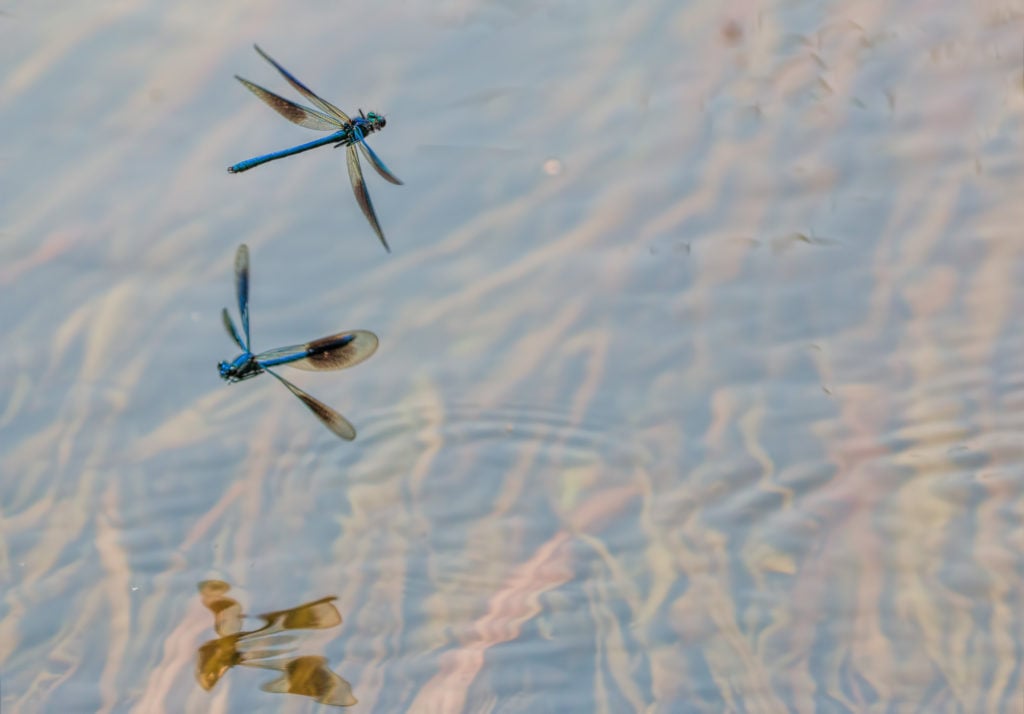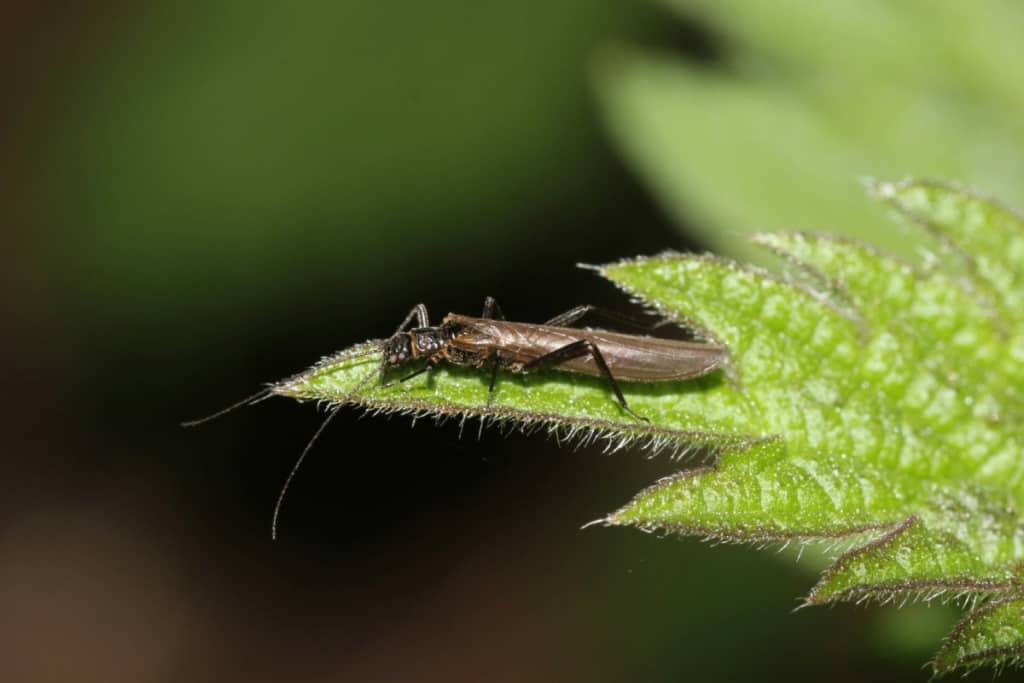
Discover more as you learn about UK Freshwater Ecology and improve your skills on our beginner to advanced courses.
We run regular freshwater ecology courses throughout the year delivered online and UK wide by expert tutors and follow a framework to progress your learning at a level to suit you.Freshwater Habitats
Freshwater ecosystems are vital to human and animal life, as they provide water for drinking, growing crops, energy, food and transport. Freshwater habitats include rivers, streams, ponds, lakes, bogs, springs and wetlands.
Many of our native species rely on these ecosystems for part or all of their life – some more heavily than others. These ecosystems are threatened by climate change, pollution, degradation and invasive non-native species. Understanding how these habitats’ biotic and abiotic factors interact can help us assess and determine the health of freshwater ecosystems and put conservation practices into place.

Freshwater Invertebrates
Freshwater invertebrates are those which spend at least part of their lifecycle in freshwater, and they are often used in freshwater ecology studies and health assessments. This includes invertebrates that we often think of when we think of water, such as dragonflies (Odonata), mayflies (Ephemeroptera), water bugs (Nepomorpha) and water beetles (Coleoptera). However, it also includes other invertebrates that we may not think of immediately, such as fly larvae, chalcid wasps and lacewing larvae. Freshwater invertebrates are endlessly fascinating, and they play an important part in the ecology of freshwater ecosystems and help maintain the quality of our water. They are also a very important food source for other species, such as fish, birds and mammals.
Freshwater Invertebrates can also be used as indicators to assess the health of freshwater ecosystems so knowing how to identify freshwater species is a key skill for any ecologists or conservationists working in these habitats. Most freshwater invertebrates can only be identified using a microscope, many are small and require a lot of skill and practice before you can be confident identifying them to species level. However, we think the best place to start identifying these is with dragonflies and damselflies. There are currently around 30 dragonfly species and 20 damselfly species which can be encountered in Britain and Ireland. Many of the adults are beautifully coloured and most of them can be identified in the field once you get your eye in.




Identification Courses
Our freshwater courses are delivered by experts in the field, and they will equip you with the skills and knowledge to discover more about the habitat and the species that reside there.
Training is led by expert tutors who are passionate about the subject. Taking place at venues across the UK, our courses are designed to progress your learning at a level to suit your needs.
Each course is part of a learning framework. You can see the course level descriptions here. Natural history courses are available at all levels, from beginner through to professional training.
Identification Resources
Dragonflies and Damselflies Chart
AIDGAP Key to the major groups of British freshwater invertebrates




